It’s an interesting component of human nature that we don’t react proactively when we see stats like the one that was shared by Gartner Research in their “Sales Transformation: The Future of Sales.” (We strongly encourage you to download the report — we will only share a few golden nuggets from it here.)
Gartner estimates that by 2025, 80% of B2B sales interactions between suppliers and buyers will occur in digital channels.
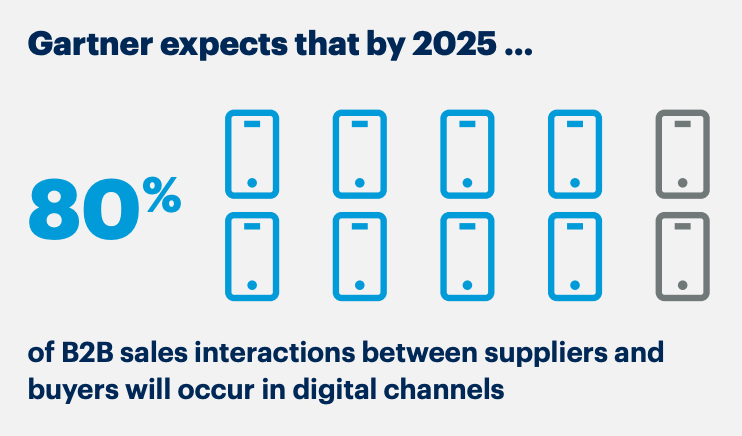
Why the drive toward digital? Let’s break it down, and then get into some thoughts on how you can make this a competitive advantage instead of a precursor to imminent demise.
The 44% club: Millennials leading the generational shift towards digital
The fact that more customers are shifting towards digital shouldn’t truly come as a shock. Look at your own behavior, and how you research products and services.
Your first step toward learning probably isn’t to pick up the phone and call a sales rep — it’s to go to your computer and do a problem-related search.
And what is now a relatively new behavior for older generations is the PRIMARY behavior for digital natives, like Millennials. In fact, 44% of them don’t want to speak to a rep at all during the sales process.
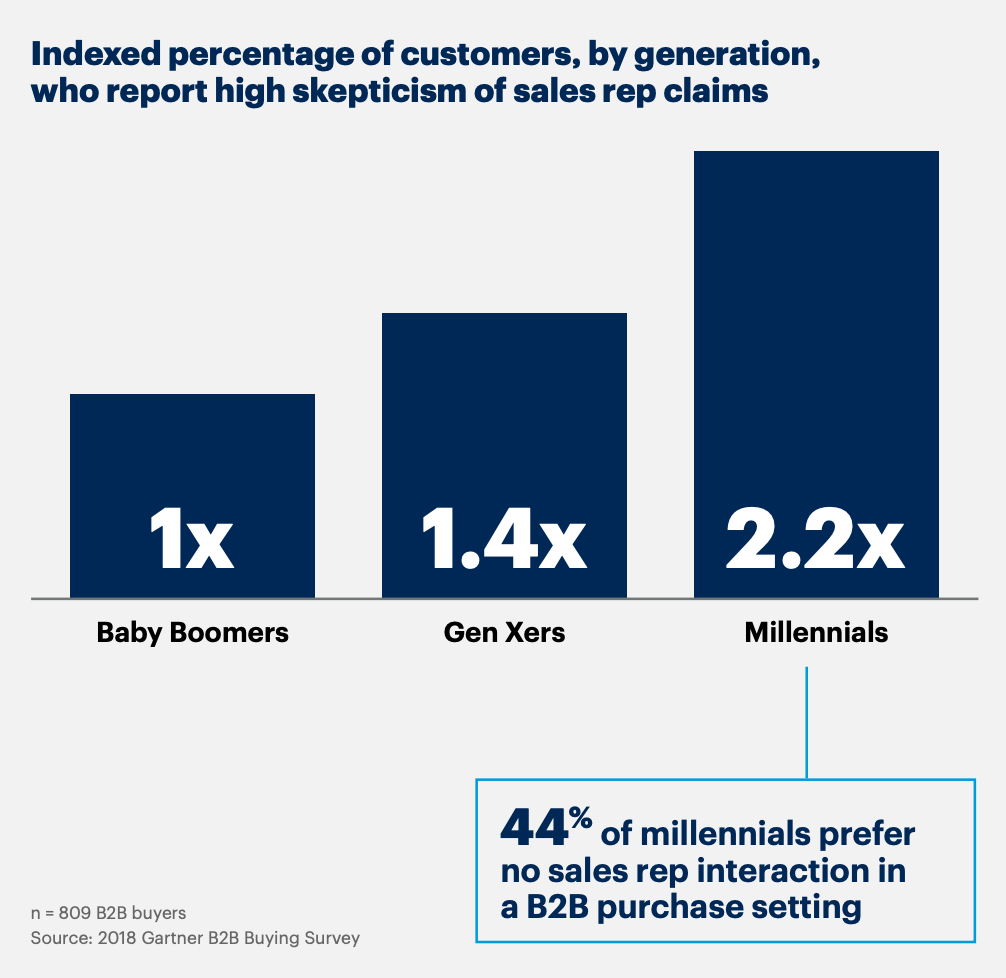
We don’t think this generation is necessarily more skeptical of salespeople than any other generation. Their inclination to interact online is what they’ve grown up with — it’s their preferred mode of interaction.
Your goal as a sales and marketing leader is to make sure you’re providing the information they want, where and when in the buying process they want it.
Again, think about your own buying processes, including consumer purchases. As the report indicates, “B2B organizations have fallen behind the seamless, easy and informative standard of B2C digital platforms.”
Current state indicates website and salespeople are neck-and-neck
The future appears to be now, according to metrics from a different Gartner report. According to “5 Ways the Future of B2B Buying Will Rewrite the Rules of Effective Selling,” customers are already using websites just as much as they use reps.
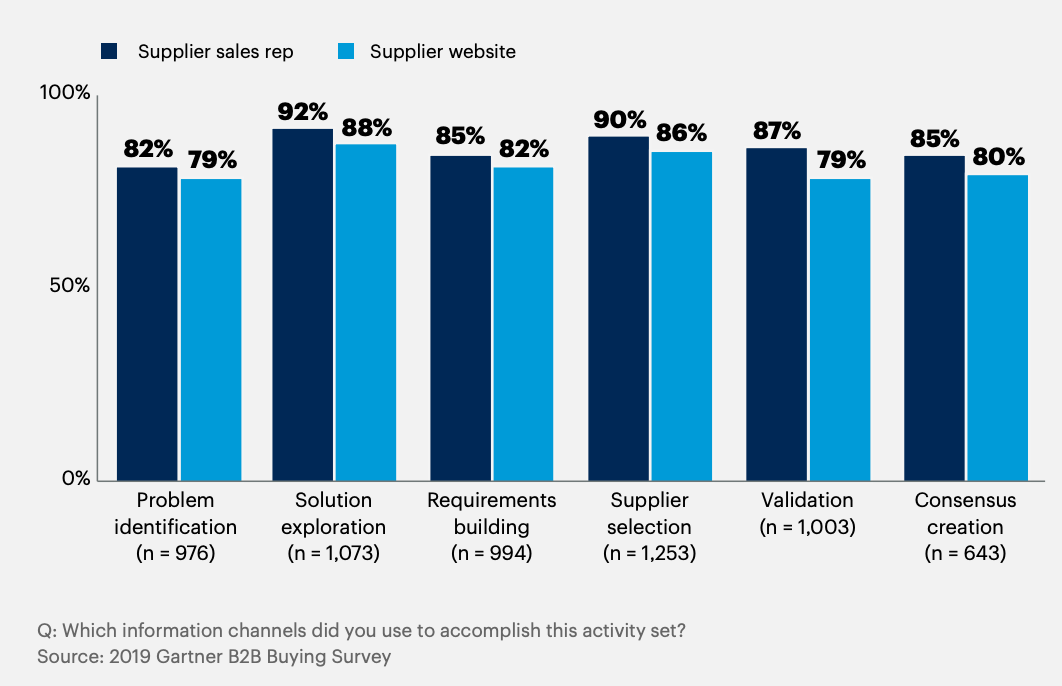
The survey found “near equal usage of a supplier’s website versus sales reps to complete the most common buying jobs.”
That’s having a profound effect on how much time is actually spent with a sales rep.
Only 17% of the total purchase is spent talking to potential suppliers
Meeting time with customers is dwindling. “Only 17% of the total purchase journey is spent in such interactions,” the 5 Ways report indicates. “Considering the average deal involves multiple suppliers, any given sales rep has roughly 5% of a customer’s total purchase time.”
Selling complex products to multiple customers has always been part of the challenge for B2B sellers, especially in manufacturing. But now, customers aren’t waiting for a meeting with your sales team. They’re looking online for their answers.
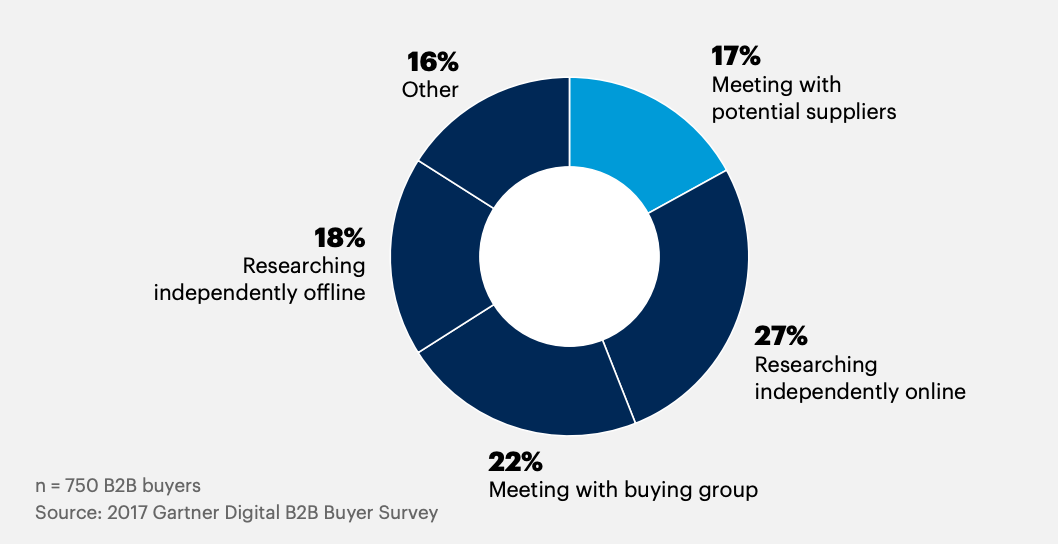
Buyers sources of quality information isn’t limited to the competition
According to another Gartner report, the “The Sense Making Seller,” one of the roles of today’s salesperson is to help customers “make sense” of all this great information. They break down three potential approaches based on a cluster analysis:
Giving: “I can get you a lot more information on that.”
Telling: “Let me tell you what you need to know.”
Sense Making: “There is a lot of information — let me help you make sense of it.”
The Sense Making approach is by far the most effective route.
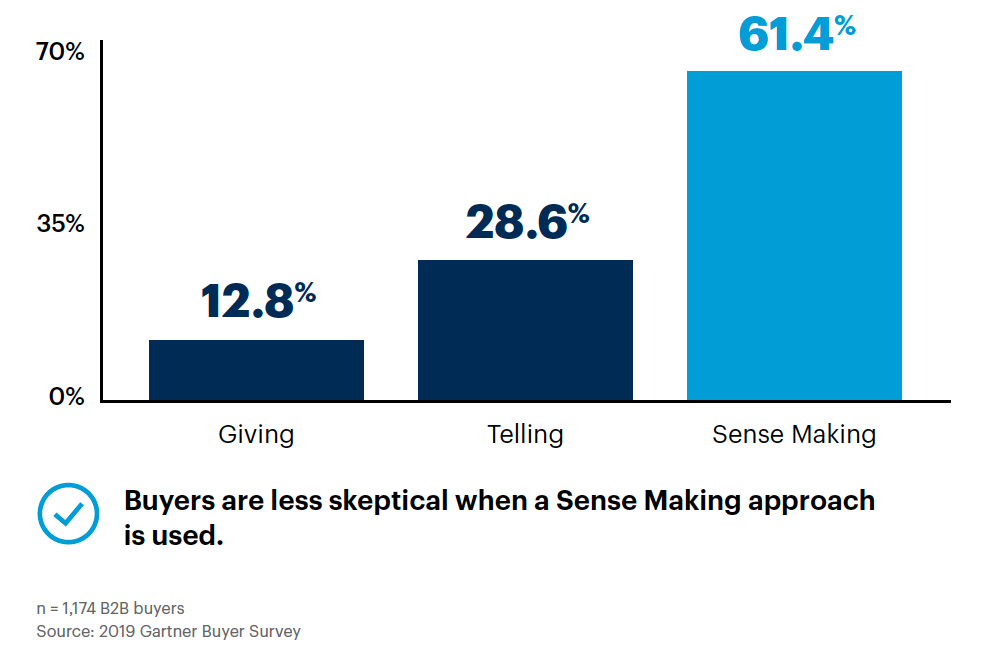
This Sense Making approach aligns with the position of the Challenger Sale approach, where you use data-backed insights to challenge a customer’s assumptions of their current way of doing business.
How can you take action to avoid the Digital Doomsday scenario?
You may find the phrase “digital doomsday” a bit hyperbolic, but the trends will be painfully obvious to those who don’t act. Here are three things you can do to make sure your business is heading in the right direction:
- Use content to make a Digital Twin of your sales team. Ok, people are moving to digital channels. That doesn’t mean the need to sell will be eliminated. You can replicate your sales efforts online through the use of strategic content — effectively creating a “Digital Twin” of your sales reps.
- Adapt a Challenger-mindset approach for your Digital Twin. A sales approach dictates the success of an offline sales person. Why should it be any different for the online version? We find the approach described by Matthew Dixon and Brent Adamson in The Challenger Sale aligns very well with digital content marketing.
- Sales and marketing must grow the Digital Twin together. Digital Doomsday should make any sales and marketing pro uneasy. Sales will have to rely on the marketing team more than ever.
In turn, marketing must get waaaay better at sales. If these two roles remain siloed, you’ll likely fail. But if the approach becomes integrated, you can realize a significant competitive advantage.
Like any seismic change, there will be winners and losers. But those who adapt to transition — who actually master the cross-functional sales and marketing skills this moment demands — will welcome the Digital transformation and the opportunity it offers.

